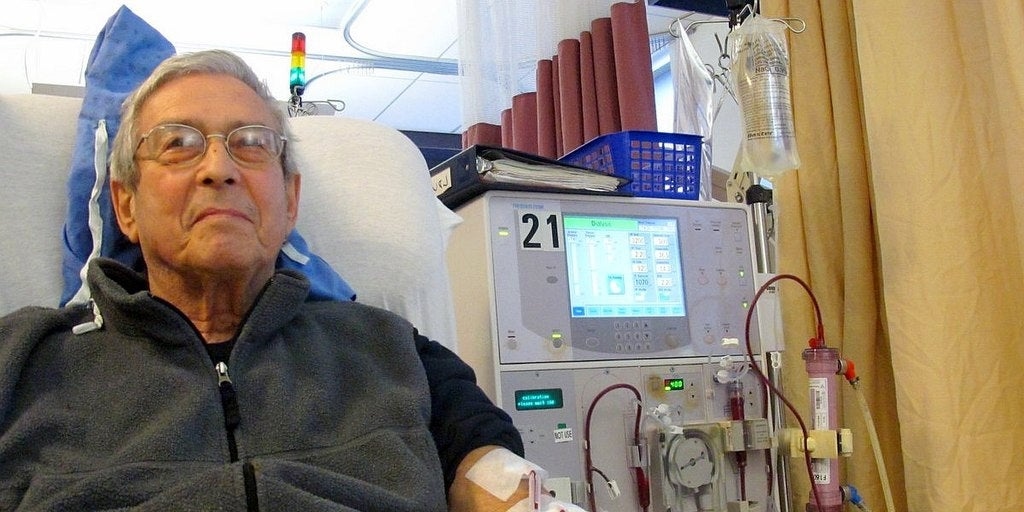James Watson, discoverer of the enigmatic structure of DNA, dies at 97

The controversial American biologist James Watson, hailed as one of the discoverers of the structure of DNA, died this Thursday at the age of 97, as confirmed by his son Duncan to The New York Times . Watson and his colleague Francis Crick revealed in 1953 that the molecule that holds the instruction manual for living beings has a double helix shape. This configuration, resembling two coiled spiral staircases in which the opposing rungs follow pairing rules, allows DNA to make heritable copies of itself. This extraordinary structure is, as Watson himself proclaimed, “the secret of life.”
The Chicago-born researcher was only 25 years old when he published the study that revolutionized biology. Watson and Crick deduced the mysterious structure of DNA after observing images obtained by two scientists, Rosalind Franklin and Maurice Wilkins, at King's College London, using a technique called X-ray crystallography. The three men won the Nobel Prize in Medicine in 1962. Franklin, who had died four years earlier, was marginalized for decades from the official history of one of science's greatest achievements.
Watson, chosen in 1988 by the United States to lead the ambitious project to sequence all human DNA, was ousted in 2007 when, in an interview with the British weekly The Sunday Times , he stated that he was “pessimistic” about the future of African citizens. Development cooperation policies, he declared, “are based on the assumption that their intelligence is the same as ours, while all the evidence says otherwise.” For Watson, equality for people of different skin colors was a nice wish, but “people who have to deal with Black workers know that it isn’t true.”
The biologist apologized, compelled by global outrage, but was forced to resign as director of the Cold Spring Harbor Laboratory on Long Island, New York. He went from being a hero of science to a pariah. In 2014, he auctioned off his Nobel gold medal and sold it for nearly five million dollars to Russian oligarch Alisher Usmanov, owner of a metallurgical empire.
In 2019, Watson reappeared in a documentary on American public television, Decoding Watson , and once again launched his racist theories without scientific basis. “There are differences between whites and blacks in the results of intelligence tests. I would say the difference is genetic,” he asserts in the film. Just two months earlier, the Society of Human Genetics in the US had issued a statement , “alarmed by the social resurgence of groups that reject the value of genetic diversity and use distorted or already discredited genetic concepts to reinforce false claims about white supremacy.”
The documentary *Decoding Watson* , in which director Mark Mannucci followed the nonagenarian scientist for a year, was a perfect opportunity to acknowledge his mistake and rehabilitate his image, but the opposite occurred. When asked directly if he had changed his mind, Watson replied: “Absolutely not. I wish I had changed my mind, that there had been new scientific discoveries showing that nurture is far more important than innate traits, but I haven't seen them.” Meanwhile, the Society of Human Genetics clarified that genetics “demonstrates that humans cannot be divided into biologically distinct subcategories.”
The director of the U.S. National Institutes of Health, Francis Collins, had to speak out in 2019 to respond to racist remarks made by Watson, who had been his colleague for decades in the global race to read human DNA. “It is disappointing that someone who has made such groundbreaking contributions to science is perpetuating such harmful and scientifically unfounded beliefs,” Collins stated in an interview with The New York Times . Zip code is often more important than genetic code, as public health experts repeatedly point out. People with more money, better education, and better nutrition are, on average, those who perform better on intelligence tests.
An X-ray image, obtained in Rosalind Franklin's laboratory and known as Photograph 51 , has gone down in the history of science as key to the discovery of the enigmatic double helix structure. It showed the DNA molecule with unprecedented clarity. Thanks to this and other images, Watson and Crick deduced the mysterious configuration and published their conclusions independently. "Rosalind Franklin had that famous photograph for eight months and never concluded that it was a helix," Watson remarks in the documentary.
Medical historian Nathaniel Comfort and zoologist Matthew Cobb presented a very different version two years ago, after consulting documentation from the period. “Watson’s narrative starts from an absurd premise. It presupposes that Franklin, an expert crystallographer, was incapable of understanding her own data, while the novice Watson did so immediately,” Comfort and Cobb explained in an article in the journal Nature . According to these researchers, chemist Rosalind Franklin was the first of the four co-discoverers to notice that DNA molecules contained “large helices with several strands and with the phosphates facing outwards,” as she herself stated in November 1951 at a seminar attended by James Watson.
Far from acknowledging his colleague's contribution, the American made sexist remarks about her a decade after she had died of ovarian cancer. In his book The Double Helix , published in 1968, Watson wondered "what she would look like if she took off her glasses and did something different with her hair."
Geneticist Eric Lander, founder of the Broad Institute of MIT and Harvard, toasted the Human Genome Project on Watson's 90th birthday in 2018. Days later, Lander posted this message on his social media: “His views are abominable: racist, sexist, anti-Semitic. I was wrong to toast him. I apologize.”
EL PAÍS




